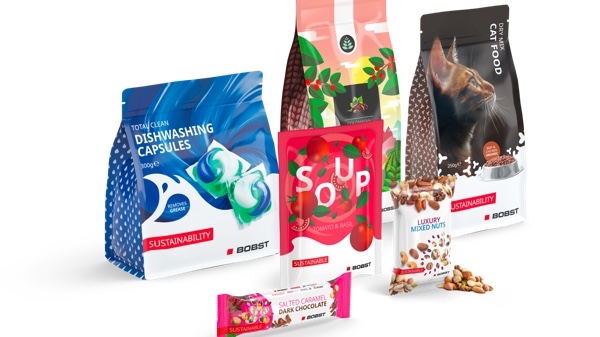Offset Printing
Empowering brands and converters with color consistency and predictability

Thursday 22. August 2024 - In packaging, accurate color reproduction can be critical to business success for converters and brand owners alike. Consistent brand color across a single SKU, and even multiple types of packaging, signals product integrity and high quality.
From Coke red and Cadbury’s purple to Heineken green, and the bright colors of M&M packets, color is intrinsically linked to brand identity.
Brand owners are also looking for faster time to market to respond to shifting consumer needs and new packaging trends. They seek agile suppliers that can react quickly to their requirements as they change, without compromising on color quality and consistency. In addition, sustainability targets must be met by reducing waste, by introducing new eco-friendly materials, and by optimizing production methods, without increasing costs.
All these demands put pressure on converters to deliver a streamlined and fully controlled process with high-quality results that closely match color targets. But it can be challenging to maintain color consistency and repeatability, keeping in mind the multitude of variances affecting the outcome, such as operator skill level, substrate quality, and global production facilities. The answer is to fully digitalize color matching and implement Extended Color Gamut (ECG) printing, an open partnership system suited to solvent-based, water-based, and Ebeam inks.
Extending the gamut with oneECG
BOBST’s oneECG technology expands the traditional CMYK color model by adding up to three colors: orange, green, and violet to the standard cyan, magenta, yellow, and black set up on press. This extension gives converters access to a broader color gamut without relying on spot (Pantone) colors. As a result of this standardization, oneECG can achieve more vibrant and accurate color reproduction, especially in flexographic printing, while also minimizing waste and environmental impact.
With oneECG, color matching is taken out of the hands of operators to become a fully digital process, performed by a software system in prepress. Consequently, color Delta E (a measure of color difference) remains consistent, guaranteeing that print jobs meet the expectations of the customer. Moving away from using expensive spot colors not only saves on costs, but also cuts down ink waste and storage as the inventory consists of only CMYK+OGV inks.
In oneECG printing, as much as 90% of job preparation is performed offline. This major shift in the workflow leads to an increase in press uptime, as start-up procedures and job changeovers can be performed much faster. It also reduces start-up waste of materials and ink by up to 35%, because the job comes to color in less time. Meanwhile, operators will have more time to take care of other tasks. These improvements boost productivity and align with brand owners’ green targets.
“oneECG offers converters a robust and innovative solution to eliminating color consistency issues. It also excels by enabling them to reach up to 95% of the Pantone book with seven fixed colors, compared with only 65% when using the standard CMYK. This presents fantastic advantages in efficiency, sustainability and profitability, helping them to match brand owners’ expectations,” said Marco Carrara, Technology Sales Director, CI Flexo.
BOBST oneECG deployed for CI flexo
BOBST has developed oneECG solutions for CI flexo, inline flexo and gravure printing, allowing presses to reproduce brand Pantone colors by digitalizing color matching. This makes the process stable, easy, repeatable, and consistent, as well as independent of human interpretation, while also guaranteeing process knowhow and support. For CI flexo, this innovation has been available for some time.
All BOBST CI flexo presses, new and existing, can run oneECG without additional upgrades or add-ons. Changing the color methodology is simply a decision made by the organization, but it requires a dedicated team effort and the understanding of customers to achieve successful outcomes. Crucially, the entire workflow, from prepress to tooling and press setup, must follow specific technical tolerances to ensure the process is reliable and repeatable, not just on a single press, but across multiple machines, sites, and regions.
Mastering process consistency is made possible by the high level of automation on BOBST’s CI flexo presses. Digital automation features include smartGPS (Graphic Positioning System), which performs registration and impression setting procedures at the platemounting stage rather than on press. Advanced quality control measures, such as the Digital Inspection Table (DIT) for flexible packaging, can also be deployed.
Adding connectivity to the equation, BOBST Connect can offer automated visibility and full traceability of the entire production workflow. This digital platform provides data-driven insights, performance history, job comparison and statistics to support color consistency and efficiency over time.
Collaboration for flexible packaging success
It is important to note that the oneECG solution goes beyond implementing a new workflow and adjusting the mindset of the operators. BOBST also partners with other suppliers in the industry to help customers maximize color stability and repeatability, offering guidance and support when using oneECG or deciding to make the transition. At drupa 2024, a flexible packaging application, printed with water-based inks in seven colors plus white, showcased BOBST’s collaboration with Flexicon, XSYS, tesa, Petroplast and Follman to promote more sustainable printing with oneECG.
“oneECG is made possible through the four central pillars of BOBST’s vision: digitalization, automation, connectivity and sustainability. Considering the numerous benefits, it is evident that this technology represents the future of packaging production with consistent, high-quality printing. BOBST is at the forefront of innovation in all printing technologies, and we can support converters through every step when switching their production to oneECG,” concluded Marco Carrara.
For Litoplas in Columbia, the change to oneECG printing has made a vast difference, or as the company’s CCO, Luis Mora, describes it: “ECG has revolutionized our printing operations, resulting in better outcomes and a more efficient workflow.”
